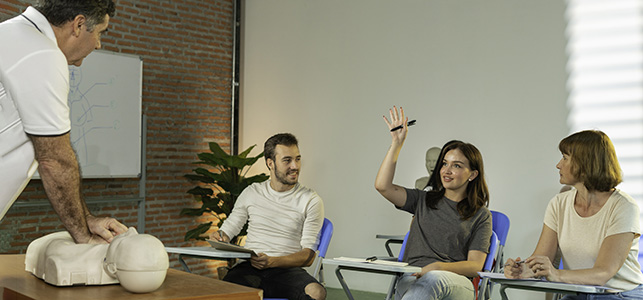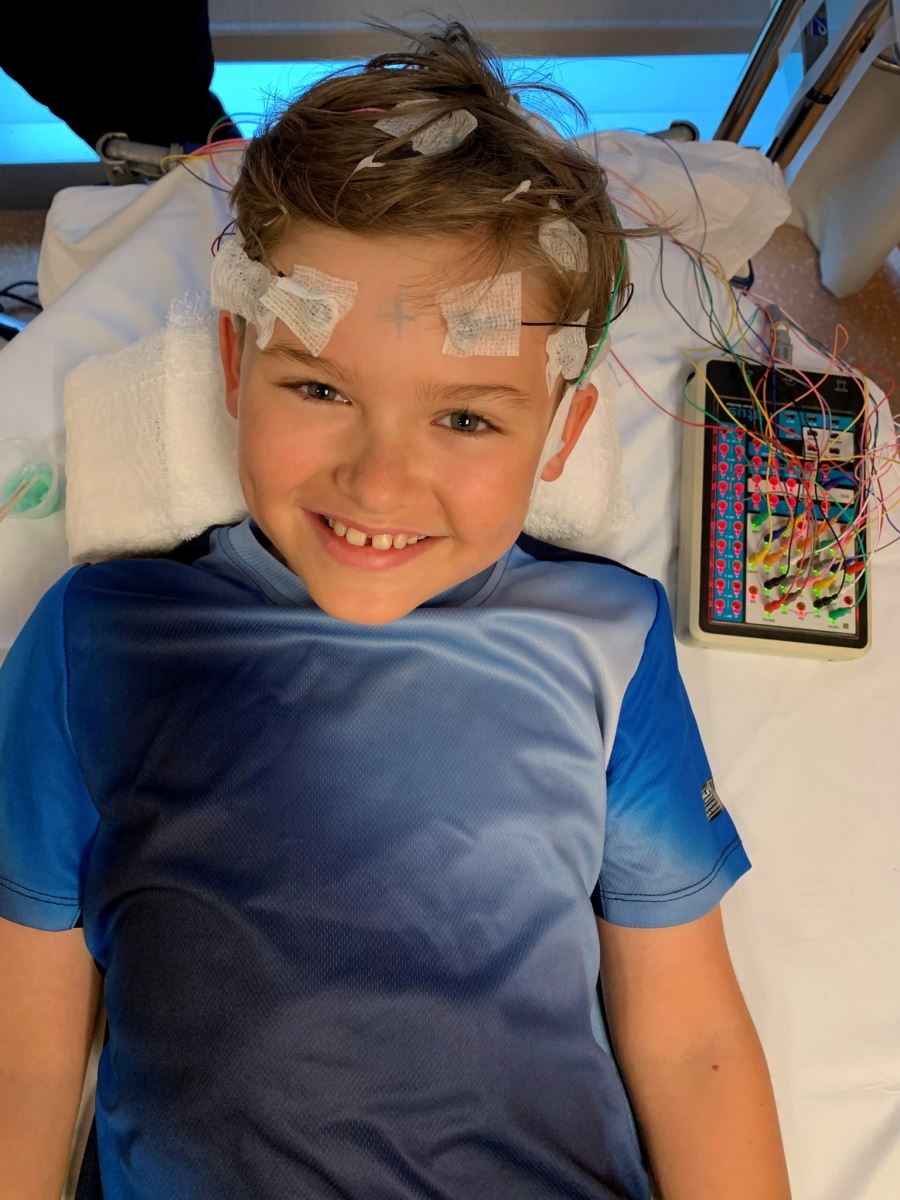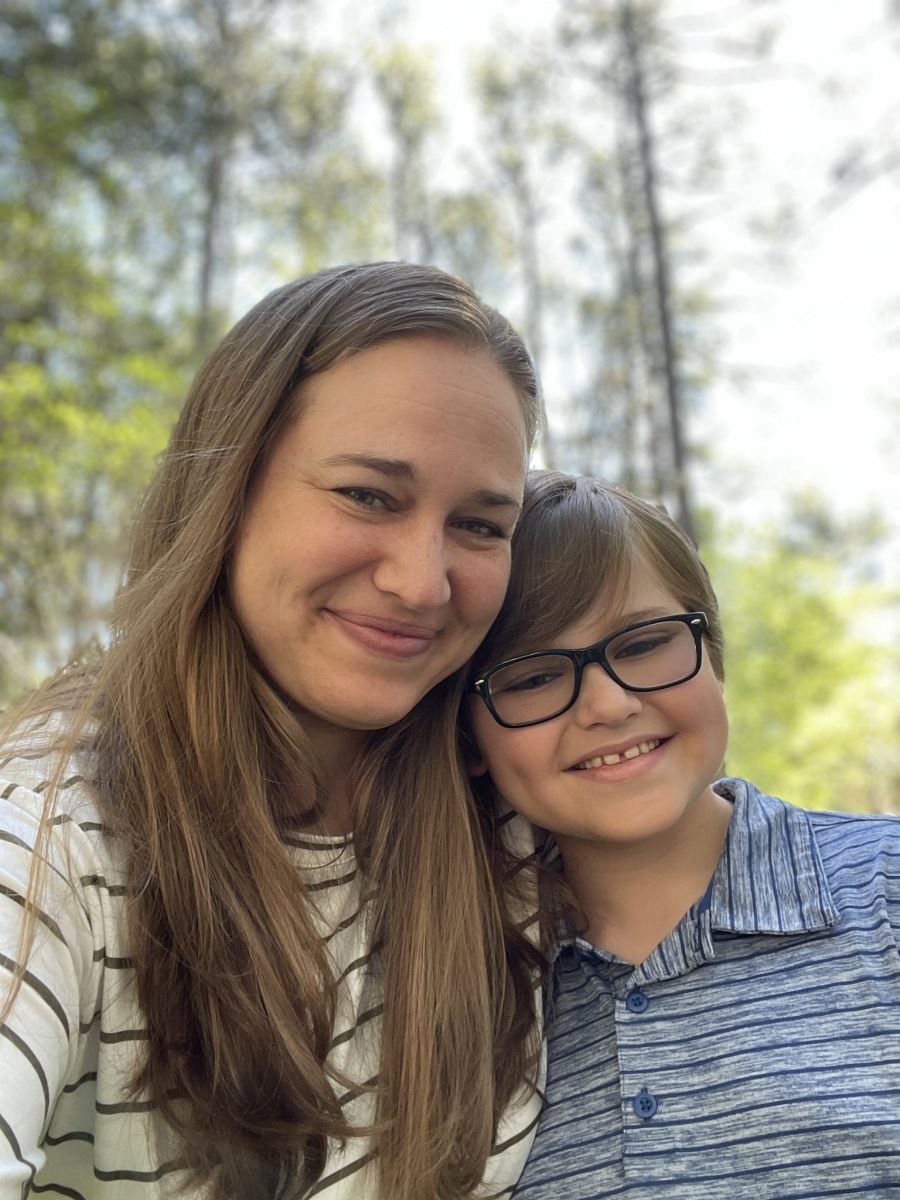
Her family’s surprising diagnoses and how school is a safe space
 For Jenny Brady – or Mrs. Brady as her math students at Cosby High in Chesterfield County call her – the path to her school becoming Project ADAM designated has been quite personal. Earning the title “Project ADAM heart safe school” means the school has a trained and practiced team and equipment to appropriately respond should a sudden cardiac arrest occur on school grounds.
For Jenny Brady – or Mrs. Brady as her math students at Cosby High in Chesterfield County call her – the path to her school becoming Project ADAM designated has been quite personal. Earning the title “Project ADAM heart safe school” means the school has a trained and practiced team and equipment to appropriately respond should a sudden cardiac arrest occur on school grounds.
Two years ago, Brady’s now 11-year-old son, Connor, began experiencing seizures. Through a series of emergency room visits, hospital stays, outpatient appointments and tests, our neurology team diagnosed him with epilepsy. During this process, they recommended genetic testing to pinpoint the cause of the seizures and help guide treatment.
“We were having difficulty finding the right medicine, so the thought was let’s see if there’s a genetic cause for his epilepsy. Sometimes, based on certain genetic results, it can be directional with what medication tends to work best,” explained Connor’s dad and Jenny’s husband, Matt.
The results, however, weren’t what they expected. The tests showed no genetic links to Connor’s epilepsy, but he did screen positive for long QT syndrome, a congenital heart condition that causes arrhythmia and, in some cases, cardiac arrest. The expert he needed was just a few steps away – one of the many upsides of getting his care at CHoR. The neurology team referred Connor to Dr. John Phillips, a specialized pediatric cardiologist and electrophysiologist in our heart center.
Finding the pediatric subspecialist they needed in the heart center at CHoR
 “It was not what we were looking for – and a bit of a new stress for us,” Matt added of this unanticipated diagnosis. “We were very grateful Dr. Phillips was at the hospital because he does have a lot of experience in this area, which is very rare.”
“It was not what we were looking for – and a bit of a new stress for us,” Matt added of this unanticipated diagnosis. “We were very grateful Dr. Phillips was at the hospital because he does have a lot of experience in this area, which is very rare.”
They were able to get an appointment with Dr. Phillips in short order.
“I remember at the beginning of that meeting he told us that Connor is going to be okay. And as scary as it was, there were some easy, positive things we could do that were going to make it so he was going to be okay,” said Jenny. “That was comforting because when you read about long QT, for a lot of people the first symptom they have is cardiac arrest.”
“I know a diagnosis like this can be frightening for families, so I focus on education and reassurance,” said Dr. Phillips. “In Connor’s case this news came shortly following his epilepsy diagnosis, so working in tandem with his neurology team is an important part of ensuring comprehensive care for his overall health – and it’s something we do regularly at CHoR.”
Because long QT syndrome can be an inherited condition, Connor’s diagnosis triggered familial testing which revealed that his mom, brother, grandma, uncle and cousin have it too. Dr. Phillips will continue to care for Connor, and he was able to connect the other family members – some of whom live in other cities/states – to specialists who could provide the further testing and care they needed.
Though they were thankful to have discovered the heart conditions “accidentally” and not as the result of an emergency event, the Brady family had a lot to consider and learn about with these new diagnoses. They got automated external defibrillators, or AEDs, to keep at home and take with them wherever they go. And, while Connor and his brother enjoy childhood, their parents take special steps to keep their boys safe.
“It’s been really interesting educating friends’ parents who have all been absolutely, wonderfully willing to learn and to take that on. That’s been a bit of a change, but just an extra safety net that we have,” said Matt, of explaining the condition and showing other parents how to use an AED.
Making sure school is a heart safe place for her students and sons
During the first appointment with Dr. Phillips, he also encouraged Jenny and Matt to talk to their sons’ elementary school about their heart condition. They looked into how far their classrooms were from the nearest AEDs and determined they only needed to bring their home AEDs on field trips. In addition to being the director of pediatric electrophysiology at CHoR, Dr. Phillips is the medical director of Virginia’s affiliate of Project ADAM, a free program that helps schools ensure they're prepared to care for students, faculty, staff and visitors who may experience a sudden cardiac arrest. By coincidence, Chesterfield County, where the Brady family lives, was already in the planning phases of having all schools work toward Project ADAM designation.
“Sometime after [our family’s diagnoses], my school was asked by Chesterfield County to get Project ADAM certified. The school nurse was asking for volunteers among staff to be trained and join the Project ADAM team,” said Jenny, who was among the first to sign on. “The following school year, which was this past school year, we were able to get in-house training to make sure everybody's CPR certification was up to date, as well as work through making our school plan.”
Beyond having a plan, the team practiced implementing it and responding to mock emergencies to make sure they’re ready to take action at a moment’s notice.
“After running the cardiac emergency drills in our school, I am confident we could potentially save a life. Watching so many of our staff members become involved and learn how to operate an AED and perform CPR made my heart happy,” said Cosby school nurse, Lori Edwards, MSN, RN. “Children’s Hospital of Richmond at VCU did a wonderful job at sending all the necessary documents and information to help us through the process. All my questions were answered in a timely manner and guidance was always there when needed.”
For Jenny, it was a personal and professional endeavor. The elementary school her boys attended was also certified this past year, and the middle school Connor will begin attending next month was the first middle school in the county to achieve designation.
“As a parent of two kids with heart conditions, it makes me feel so much more comfortable. As a teacher, it makes me feel more confident in my classroom,” she said. “Because even though teachers go through CPR training every 10 years for our licensure, I think I speak for a lot of people not in health care when saying that it's still very intimidating. Before Connor had his diagnoses, the training for epilepsy and CPR the teachers received felt very remote to me – like, this will never happen. But then, of course, it does. Connor's had a seizure at school already, so just knowing that the schools have safeguards in place really brings us a lot of peace.”
Connor is taking heart health into his own hands through education and philanthropy
Connor is taking a lead role in keeping his family and community safe as well. He’s already done a brief CPR training in PE class. He’s also become enthusiastic about supporting the American Heart Association, even donating some of his own allowance to the cause through a fundraiser at his school.
“As both of our sons get more independent, they’ll need to train their friends,” added Matt. “As they get older and they’re more likely to be without parental supervision at all times – that’s the next frontier we have to figure out.”
In a few short weeks, Connor will start middle school, join the band and begin navigating his health conditions in a new environment. His CHoR team has emphasized that his diagnoses don’t need to slow him down so, for now, he’s spending his summer at golf camp, playing video games, going to the beach with his cousins, and hanging out with his friends and parents.
“We’re really proud of Connor. He's been through a lot over the last 2 years, but he's been doing great,” said Matt.
The number of Virginia schools preparing to save lives with Project ADAM continues to grow
Dr. Phillips and his team are committed to keeping kids (and adults!) like Connor safe not only within the walls of CHoR, but in their communities too. Since establishing our Project ADAM affiliate in November 2022, they’ve designated more than 65 Virginia schools as Project ADAM heart safe. Many lives can be saved through proper education and access to AEDs.
